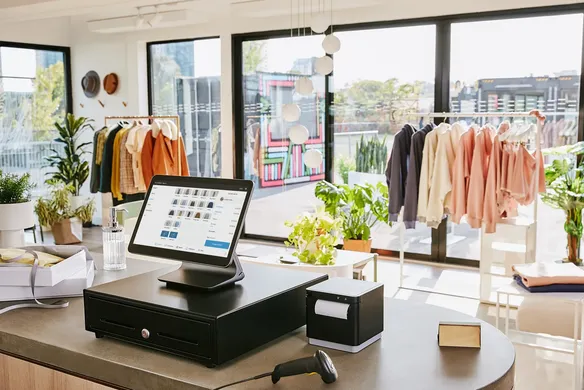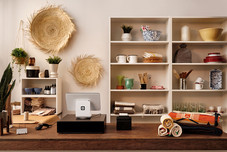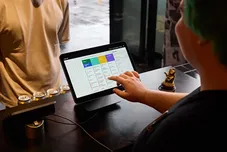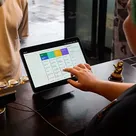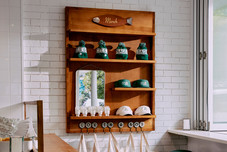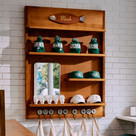Table of contents
The retail market is huge in Australia. With a turnover of more than $300 billion recorded in 2020 and the retail sector accounting for more than 4% of Australia’s GDP, it’s little wonder that many entrepreneurs are looking into creating their retail business plan.
But what is ‘retail’? While there are many different terms to learn, simply put, retail is the sale of goods or services to a final consumer for his or her own use. Customers buy these goods and services from many different sales channels, and these points of purchase can be anything from a brick-and-mortar retail store to an online store. These sales channels are also called retailers, i.e., the person or business who is selling you the goods or services.
Because of the similarities, retailers are often confused with wholesalers, but there are a couple of notable differences between the two. But to understand its distinction, we first need to look at the supply chain.
Get Started with Square for Retail.
Sell intelligently with our new retail point of sale.
Retail vs wholesale and the supply chain
The supply chain is the process of manufacturing and delivering goods from the manufacturer to the end consumer. In a supply chain, the movement of goods can be illustrated like below:
Manufacturer > Wholesaler > Retailer > Consumer
The manufacturer is the producer of the goods. For example, if you’re a local farmer who sells eggs from the chickens on your farm, then you would be a manufacturer or producer of the eggs since it comes from your farm. In this case, you have a choice to sell your eggs to a wholesaler, retailer, or directly to the consumer. Let’s take a closer look at all options.
Option 1: Manufacturer > Consumer
Option 1 is where you’d like to sell your eggs directly to the consumers. You decide to open a shop just outside your farm and market your eggs yourself. Consumers directly come to you for your eggs, and they buy at a price that you set. In this case, you would be considered a manufacturer and a retailer, since you’re selling it directly to the consumer.
Option 2: Manufacturer > Retailer > Consumer
Option 2 would be to sell to the owner of a local grocery store. This grocery store owner, who is now your retailer, would buy these eggs for you at a cheaper price and sell to customers in his store at a markup. By selling to a retailer (or a few retailers), manufacturers can expand their reach of customers and sell to more people in multiple locations. In this scenario, you are considered the manufacturer and wholesaler of the goods.
Option 3: Manufacturer > Wholesaler > Retailer > Consumer
In option 3, your egg production is growing, and you’re thinking of selling to consumers overseas instead of just selling it locally. In this case, you would need to sell to a wholesaler, who has the means of selling to many local retailers. You’d then sell to your wholesalers in a bulk, who would then help you distribute your eggs. However, wholesalers and retailers do come with a fee which results in customers paying a higher price for your product. Generally, this option is chosen by bigger manufacturers such as Coca-Cola.
To summarise it simply, wholesalers sell to buyers who would resell the product. However, retailers sell to the end consumers who would use the product and not resell them to another party.
What are the different types of retail stores?
There are many types of typical retail stores that are in the market. They include:
- Department Stores – These are oftentimes large and traditional stores that stock a variety of products under one roof such as fashion, electrical, and homeware. Examples of department stores are Target and David Jones.
- Big Box Store – Big box stores are specialist big retailers that sell mostly one type of product, such as electronics or groceries such as electronics and groceries only. If you’re thinking of JB Hi-Fi and Coles, then you’re right!
- Discount Stores – These are department stores that sell discounted items and lower-priced brands. In Australia, a popular discount store would be Best&Less.
- Warehouse Stores – These types of stores are often no-frills warehouses. You would also often be required to be a member to access their low prices. An example of a warehouse store is Costco.
- Mom-and-Pop Stores – Retailers in this category are smaller and often niche stores run by small and local business owners. You’d mostly see them in your suburbs.
- Online Retail Store – Online retailers sometimes do not have physical stores, and they typically sell via the internet and have products delivered to customers. Examples of such retailers are Amazon and eBay.
It’s important to understand that these categories are not mutually exclusive, and a retailer can fall into two categories at once. For example, while Target is a department store, they also have an online retail store.
Must-have technology in a retail business
Technology has changed the retail industry in many ways and retailing today isn’t simply trading in cash for goods. So, before you start your retail business, let’s look at some technology that is essential to its success.
1. Hardware
Hardware is the physical components, machines, or wiring that is set up in the retail store. Unlike software, hardware is tangible and is used to store and support the retail software used by a retailer.
Traditionally, retail businesses would use hardware such as cash drawers, receipt printers, and a cash register in receiving payments. However, recent trends in cashless payments have seen credit card readers and payment terminals become increasingly popular in retail. Not only is it secure, hardware that supports cashless payments also makes the payment process much smoother, and it ensures that operating your retail business is efficient and smooth.
2. Point of sale system
A point of sale is the moment in which your customers make a transaction to purchase your goods. Generally, customers would bring their items up to the cashier to pay for the goods. These days, customers have the ability to self-checkout their items, pay using their mobile phone, or pay using online banking or their credit card. But point of sales have evolved into more than just checkouts.
A point of sale system is the software that helps retail businesses with these transactions. It has grown from simply recording sales transactions to a platform that can integrate your inventory, sales, marketing, and data analytics. With the right point of sale software, retailers can easily manage their businesses by processing payments and refunds, creating loyalty programs, and setting up contactless payment. According to recent research, the point of sale market is expected to reach $163 billion by 2027, and it’s not hard to see why. Contactless digital payments are the future of retailing, and many retailers are jumping on the bandwagon. It’s also useful to have a retail-specific POS system, such as Square for Retail.
3. Online retail store
Online retail stores, to put it simply, are your store on the internet. Known as a part of eCommerce, online stores have been around for a while and they are here to stay. Selling online allows your customers to have 24/7 access to your products, which then turns into more sales.
Besides that, online stores usually involve low costs – for instance with Square, you can set up your online store for free. Not to mention, customers who buy from your online store are also likely to leave their information and contact, making it much easier for you to connect with them.
An online store also allows you to coordinate pickups and deliveries, showcase your products, allow customers to review these products, and link your website to your social media channels. Online retail stores are growing, and they are expected to reach $8 trillion by 2024. Gone are the days when people are especially wary of buying things online, as many customers are value its convenience and comfort.
Retail is an ever-evolving subject, and it’s important for retailers to understand the good, the bad, and the trends, to become a successful retailer.
![]()

